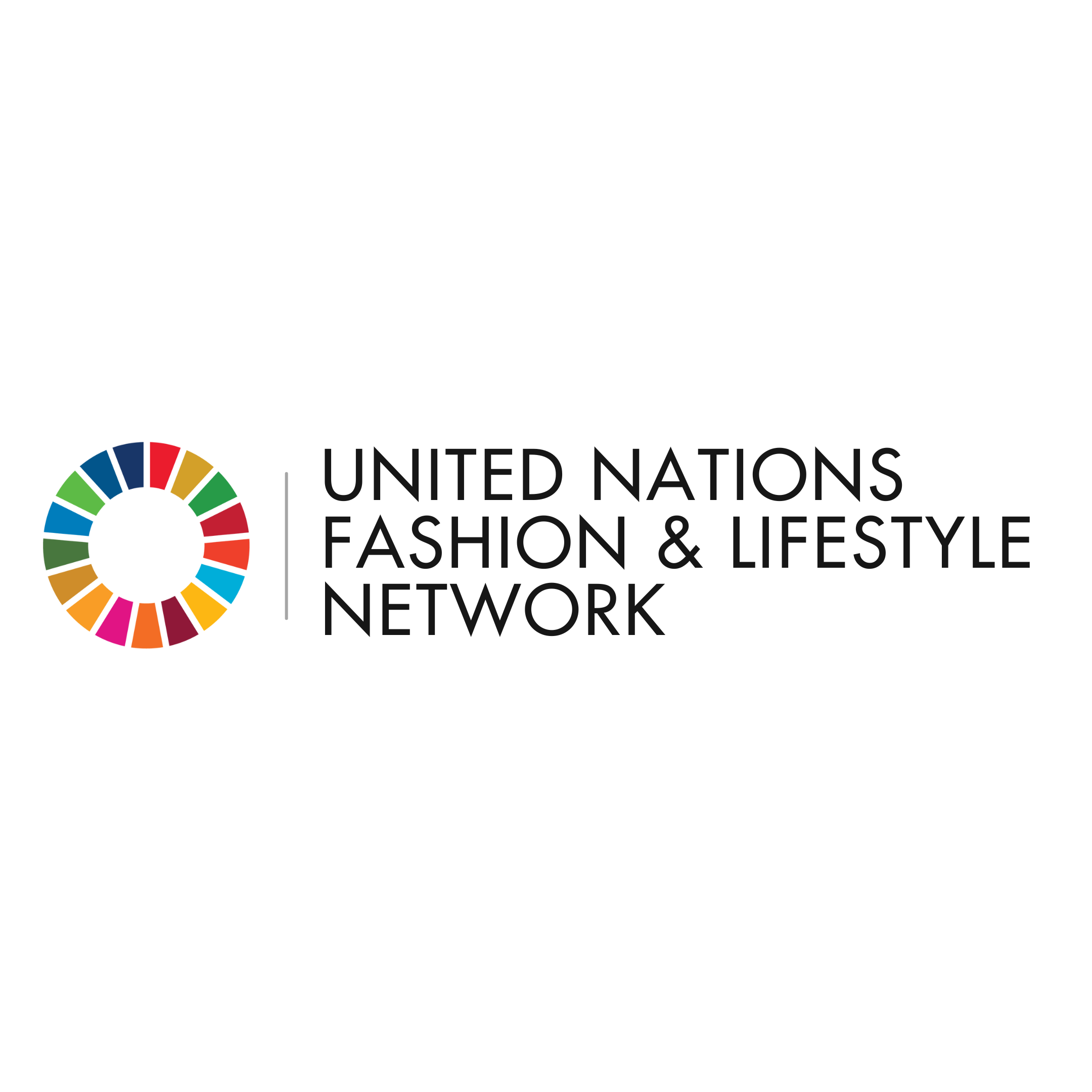Reimagine PINKO x Patrick McDowell
PINKO
(
Private sector
)
#SDGAction55038
Description
The Initiative for this project is Reimagine PINKO x Patrick McDowell. Through this collaboration, the brand represents its narrative of up-cycling, coordinated by Pinko’s creative director, Caterina Negra. The pieces are crafted by utilising past season and archive fabrics. Sustainability is at the heart of this collection, using fabrics from the Pinko archives, recycled and organic qualities and making the pieces in Italy close to Pinko headquarters to reduce its carbon footprint.
The initiative is carried out through annual releases of a sustainable collection in Collaboration with PINKO and Patrick McDowell keeping to the standards Patrick sets by working closely with the PINKO design team. The Patrick McDowell X PINKO partnership has evolved into a successful, long-term strategic relationship, resulting in 8 collections, achieving 70% recycling of PINKO's deadstock, and maintaining transparency in sourcing, as evidenced by certifications like the Forest Stewardship Council and the Global Organic Textile Standard.
This project will facilitate knowledge sharing across the industry and beneficiaries through setting up scholarships at Central Saint Martins and launching a new internship program to support young talent. Also through their #PINKOtakecare programme where they offer employees a complete health check-up once a year, which include blood tests and a cardiological screening. Also, by PINKO partnering with Patrick for its upcycled and sustainable collections it encourages their customers to take notice of the clothes they are buying and what it’s made of.
The initiative is governed through Patrick McDowell being Pinko’s Sustainability Design Director. This way Patrick can monitor and ensure the Values of the Re-imagine initiative is adhered to. For example, turning dead stock into higher value products and elevate the brand position. And working across Design, Sourcing, Retail and Marketing to create the strongest possible narrative for Pinko and its customers. Holistically approaching sustainability to make positive change.
Rising to the challenge of promoting sustainability in the fashion world, PINKO has teamed up with emerging British designer Patrick McDowell appropriately naming the collections ‘Reimagine’. Pieces are created by delving into the brand’s extensive archives, re-working dead stock fabric and discovering new eco-materials before adding some signature Patrick McDowell embellishments. Through the Reimagine PINKO x Patrick McDowell project, the brand collaboration brings results by using Patricks invaluable knowledge of sustainability combined with PINKO's platform and customer base to create sustainable, responsible fashion.
Pinko, Patrick McDowell, Production Workshops and makers in Italy
SDGS & Targets
Goal 5
Achieve gender equality and empower all women and girls
5.1
End all forms of discrimination against all women and girls everywhere
5.1.1
Whether or not legal frameworks are in place to promote, enforce and monitor equality and non‑discrimination on the basis of sex
5.2
5.2.1
Proportion of ever-partnered women and girls aged 15 years and older subjected to physical, sexual or psychological violence by a current or former intimate partner in the previous 12 months, by form of violence and by age
5.2.2
Proportion of women and girls aged 15 years and older subjected to sexual violence by persons other than an intimate partner in the previous 12 months, by age and place of occurrence
5.3
5.3.1
Proportion of women aged 20-24 years who were married or in a union before age 15 and before age 18
5.3.2
Proportion of girls and women aged 15-49 years who have undergone female genital mutilation/cutting, by age
5.4
Recognize and value unpaid care and domestic work through the provision of public services, infrastructure and social protection policies and the promotion of shared responsibility within the household and the family as nationally appropriate
5.4.1
Proportion of time spent on unpaid domestic and care work, by sex, age and location
5.5
Ensure women’s full and effective participation and equal opportunities for leadership at all levels of decision-making in political, economic and public life
5.5.1
Proportion of seats held by women in (a) national parliaments and (b) local governments
5.5.2
Proportion of women in managerial positions
5.6
Ensure universal access to sexual and reproductive health and reproductive rights as agreed in accordance with the Programme of Action of the International Conference on Population and Development and the Beijing Platform for Action and the outcome documents of their review conferences
5.6.1
Proportion of women aged 15-49 years who make their own informed decisions regarding sexual relations, contraceptive use and reproductive health care
5.6.2
Number of countries with laws and regulations that guarantee full and equal access to women and men aged 15 years and older to sexual and reproductive health care, information and education
5.a
Undertake reforms to give women equal rights to economic resources, as well as access to ownership and control over land and other forms of property, financial services, inheritance and natural resources, in accordance with national laws
5.a.1
(a) Proportion of total agricultural population with ownership or secure rights over agricultural land, by sex; and (b) share of women among owners or rights-bearers of agricultural land, by type of tenure
5.a.2
Proportion of countries where the legal framework (including customary law) guarantees women’s equal rights to land ownership and/or control
5.b
5.b.1
Proportion of individuals who own a mobile telephone, by sex
5.c
Adopt and strengthen sound policies and enforceable legislation for the promotion of gender equality and the empowerment of all women and girls at all levels
5.c.1
Proportion of countries with systems to track and make public allocations for gender equality and women’s empowerment
Goal 12
Ensure sustainable consumption and production patterns
12.1
Implement the 10-Year Framework of Programmes on Sustainable Consumption and Production Patterns, all countries taking action, with developed countries taking the lead, taking into account the development and capabilities of developing countries
12.1.1
Number of countries developing, adopting or implementing policy instruments aimed at supporting the shift to sustainable consumption and production
12.2
By 2030, achieve the sustainable management and efficient use of natural resources
12.2.1
Material footprint, material footprint per capita, and material footprint per GDP
12.2.2
Domestic material consumption, domestic material consumption per capita, and domestic material consumption per GDP
12.3
By 2030, halve per capita global food waste at the retail and consumer levels and reduce food losses along production and supply chains, including post-harvest losses
12.3.1
(a) Food loss index and (b) food waste index
12.4
By 2020, achieve the environmentally sound management of chemicals and all wastes throughout their life cycle, in accordance with agreed international frameworks, and significantly reduce their release to air, water and soil in order to minimize their adverse impacts on human health and the environment
12.4.1
12.4.2
(a) Hazardous waste generated per capita; and (b) proportion of hazardous waste treated, by type of treatment
12.5
By 2030, substantially reduce waste generation through prevention, reduction, recycling and reuse
12.5.1
National recycling rate, tons of material recycled
12.6
Encourage companies, especially large and transnational companies, to adopt sustainable practices and to integrate sustainability information into their reporting cycle
12.6.1
12.7
Promote public procurement practices that are sustainable, in accordance with national policies and priorities
12.7.1
Number of countries implementing sustainable public procurement policies and action plans
12.8
By 2030, ensure that people everywhere have the relevant information and awareness for sustainable development and lifestyles in harmony with nature
12.8.1
Extent to which (i) global citizenship education and (ii) education for sustainable development are mainstreamed in (a) national education policies; (b) curricula; (c) teacher education; and (d) student assessment
12.a
Support developing countries to strengthen their scientific and technological capacity to move towards more sustainable patterns of consumption and production
12.a.1
Installed renewable energy-generating capacity in developing and developed countries (in watts per capita)
12.b
Develop and implement tools to monitor sustainable development impacts for sustainable tourism that creates jobs and promotes local culture and products
12.b.1
Implementation of standard accounting tools to monitor the economic and environmental aspects of tourism sustainability
12.c
Rationalize inefficient fossil-fuel subsidies that encourage wasteful consumption by removing market distortions, in accordance with national circumstances, including by restructuring taxation and phasing out those harmful subsidies, where they exist, to reflect their environmental impacts, taking fully into account the specific needs and conditions of developing countries and minimizing the possible adverse impacts on their development in a manner that protects the poor and the affected communities
12.c.1
Amount of fossil-fuel subsidies (production and consumption) per unit of GDP
SDG 14 targets covered
| Name | Description |
|---|
Deliverables & Timeline
Resources mobilized
Partnership Progress

Feedback
Action Network

Timeline
Entity
Region
- Europe
Geographical coverage
Other beneficiaries
Who will benefit from the project: Production Workshops and makers in Italy and London, Art and Fashion Community. Students who benefit from the internship programme and the employees of PINKO.
More information
Countries

Contact Information
Patrick McDowell, Sustainability Design Director

